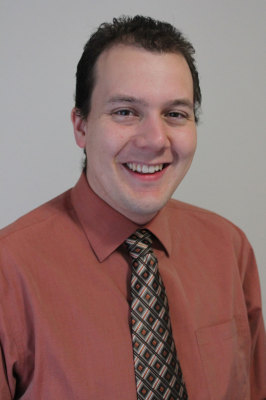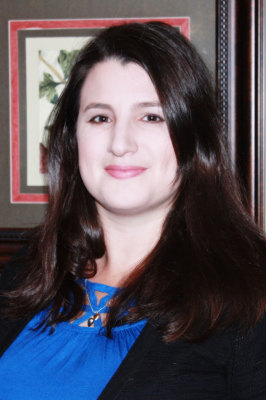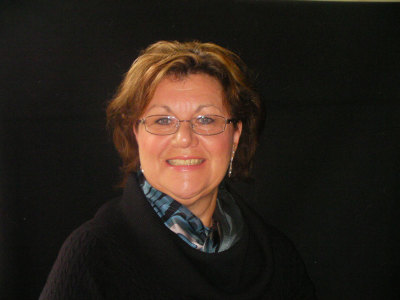Lending a helping hand by managing emergencies
STORY BY MEHREEN SHAHID

Drew Evans, 28, has an undergrad in International Relations from University of Toronto and works as trade commissioner at Department of Foreign Affairs and International Trade Canada, Ottawa / Photo courtesy of Drew Evans
Drew Evans
Pay scale: $85,000
In my current job…“We work on an international level, so Haiti, Japan or Arab Spring we jump in and help communities and Canadians.”
I got my current job…“before I graduated from Sheridan. The emergency management program helped me move within the government dept.”
At Sheridan, I remember studying about…“principles that went behind things like the incident command system and writing emergency plans and exercises and business continuity policies used a lot here.”
The highlight of my job is…“I worked with during the Arab Spring. For almost a period of six months, we were working 10–14 hour days a week. They were facing the same exhaustion and challenges as I was, but nobody stopped coming to work. Everyone just pulled through and made things happen after 3–4 months of exhaustion.”
My work in emergency management has taught me…“First and foremost self-awareness is key, you have to know what part you play in a problem and what tendencies you have that others might find annoying. Because when a disaster happens then I’m getting in the way of things and you’re getting in the way of things. How you deal with stress in general is crucial. The ability to change and adjust rapidly is also important. It’s all about adapting and figuring out what works and making it happen.”
I advise grads to be…“Patient! You’re all full of knowledge and ideas but not everyone is going to be lucky and land their dream job. As long as you don’t coast, as long as you don’t get comfortable but always find ways to grow. Focus on growing and look out for the opportunity.”
Learn how to…“network. You’re going to run in to problems that you can’t solve, but if you have a network of contacts it is key because it’s a way of sharing knowledge.”

Patricia Martel, 31, has a degree in earth science from Brock University. She is currently employed as the hazard identification and risk assessment officer for the office of the fire marshal and emergency management, Ontario, and is completing her PhD in geology from Wilfrid Laurier University / Photo courtesy of Patricia Martel
Patricia Martel
Pay scale: Up to $80,000.
At my current position I…“Identify all hazards that have or could impact Ontario. I look at what could happen and set priorities for emergency management programs.”
Some programs in emergency management in Ontario lack…“a good solid natural hazards element. Social components are also missing.”
At Sheridan…“we did planning as well. But planning is in advance of the actual event and it needs to be made more functional. And Sheridan really emphasized the functionality and utility of the plan rather than having just a document.”
One incident I remember vividly is the…“Goderich tornado. It was a well-warned event, however, it was a strong tornado. Roofs were torn off, there was lots of tree damage. Local emergencies are equipped to a certain extent but if there is something that goes beyond their resources, they have to call up further help. It was essentially a worse case scenario that came through. I was in the office maintaining situational awareness (keeping an eye on weather and the event as a whole) and providing scientific analysis.”
Young grads are…“entering a difficult job market. If you can find volunteer opportunities, and ways to show you’re really interested in the field, do so. The more you know about the field the more it’ll pay off.”
MORE RELATED TO THIS STORY:
- Single mom goes from eviction to election bid
- Sheridan student runs for Milton council
- Sheridan grad encourages aspiring filmmakers
Alan Blundell, 53, trained in management from Sheridan in the 1990s. He has worked with VWR International as nation logistics manager for 25 years and has volunteered with St. John Ambulance for 14 years / Photo by Mehreen Shahid / The Sheridan Sun
Alan Blundell
Pay scale: $80,000–$110,000
I joined St. John…“as a hobby. Started after taking a first-aid course at St. John. From that, I realized that I can educate and train people. So I became an instructor with St. John.”
My job at St. John is that of…“a medical first-response instructor. I’m also the first-aid and medical health-care instructor trainer program committee chair for Peel Region.”
An incident I remember is…“We were at an event at Celebration Square and on one of the adjoining streets there was a two-car crash involving three pedestrians. There were six casualties. St. John’s members on the scene were able to quickly assess, treat and stabilize before fire or EMS had shown up.”
I have learned that…“The person is more than the injury. So I will deal with the person first while dealing with the injury. There is some sympathy involved with the injury but to put your patient at ease allows you to be able to treat the patient properly.”
I advise grads to…“Start looking ahead, start looking forward. Look for that first position but also look past that and look for how you can grow.”

Karen Charles, 58, has worked in with the Canadian Red Cross for 23½ years. She started out working as a part-time accountant and went on to become senior manager planning and development Canadian Red Cross, Ontario / Photo courtesy of Karen Charles
Karen Charles
Pay scale: $50,000–$75,000.
My job is exciting because…“there are never two days that are the same. My job is different every day and every month. There are tasks and responsibilities that don’t change month-to-month, but the degree will change.”
One day I remember from my job is when…“the Kosovo refugee airlift that brought 5,000 people to Canada and 2,500 of them through Trenton Air Base in May 1999. I felt it was my role to greet everyone who came with a smile. It was really important for me that they knew they were safe. When I was leaving after 5 weeks, I called together all the heads of the family. And through a translator, one gentleman said, ‘As soon as we saw her smile, we knew we were safe.’ ”
The Sheridan program gave me…“a broad understanding of emergency management. I knew it from a Red Cross perspective. The program allowed me to sit around a table and use the language of emergency management from a broader perspective.”
I would go back to school for…“a program called Microsoft Project. I would have liked to learn more about it.”
Grads who are entering the field…“need to be flexible and come in and get whatever knowledge hands-on and experience and they can do that through volunteering. Volunteer with any agency that is involved in EM and go out and help with the municipality in building their emergency plan. Another wonderful growing area is geographic information systems.”
Current students of the emergency management program should…“focus on the broad understanding the program gives them. They should be able to use the information they get from school and adapt it. Because no two responses will ever be the same, but you take the knowledge you have and adapt it to the situation you’re in. It will never be written out step-by-step and you can take that and think outside-the-box.”
It is most important to remember…“the chain of command. People need to know what hat they’re wearing in a situation and don’t step out of the bounds when they don’t have all the information.”





